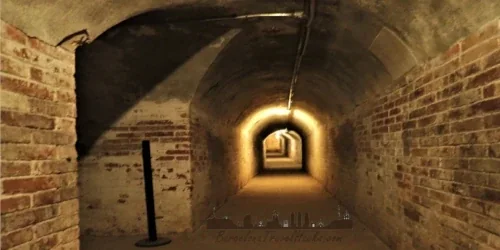Warning: Undefined array key "HTTP_ACCEPT_LANGUAGE" in /home/barcjkkl/public_html/App/Config/MySQL/language.php on line 32
Deprecated: explode(): Passing null to parameter #2 ($string) of type string is deprecated in /home/barcjkkl/public_html/App/Config/MySQL/language.php on line 36
Montjuïc Mossen Costa i Llobera Cactus Garden near Miramar
One of Europe's largest gardens of low water consumption succulent plants (cactus) with spectacular panoramic view of the city's coastline and port
About Montjuïc Cactus Garden
The Mossèn Costa i Llobera Gardens,
Barcelona Cactus Gardens History
The Mossèn Costa i Llobera Gardens (Montjuïc Cactus Gardens) in Barcelona, were inaugurated March 1970 and have been recently refurbished with additional access gates from caraterra Miramar. The refurbishment was to fix the structural consolidation of the space and the replanting of a large part of the plants that had been victims of the cold.
The winters of 1985 and 1987 were particularly cold with frost. Climatic obstacles that meant a significant reduction in the number of species. When the space opened in the early 1970s, about eight hundred different species grew there. In the winter of 1985, for about a week, the city recorded temperatures of six degrees below zero on a sustained basis. The second frost, that of 1987, was a new blow, which was deadly for many of the plants and reduced their variety by almost 40%. It also caused the sudden death of many of those who had been resting after the first frost two years earlier.
The Jardins de Mossèn Costa i Llobera are a joint project between architect Joaquim Maria Casamor i d'Espona (architect and landscaper) and Joan Pañella i Bonastre (Teacher and specialist at the gardening school).
It had been several years since work was being done to plan the adaptation of these species to the city. When the option of arranging the Montjuïc area where the gardens are located today was considered, there was already a significant collection of species from the Canary Islands, Andalusia and other nurseries in Mediterranean cities. Some plants from the Pallanca collection from Italy had also arrived.
Image Gallery for Image Gallery For Montjuïc Cactus Garden
Click on any of the 39 images to open full screen gallery player
Visiting Montjuïc Cactus Garden
- Species in the Montjuic Cactus garden (Jardins de Mossèn Costa i Llobera):
- Aloe (Aloe ferox)
- Crocodile teeth (Aloe brevifolia)
- South African, Mexican Cylindropuntia rosea, African azoaceae, Australian Xanthorrhoea, Euphorbia resinifera from Morocco
- Cereus jamac of large size - barrel cacti -Ferocactus glaucescens of the Mexican state of Queretaro
- large collection of cacti of the genus Echinopsis - Echinopsis santiaguensis, native to South America (Argentina, Chile, Ecuador, Bolivia, Brazil, Uruguay and Paraguay) They grow in sandy and gravel soils, and stand out for the size and beauty of their flowers. They can have a tree or balloon shape and have an especially high floral tube.
- Genus Echinocactus. They are Mexican and southern United States cacti, which have a kind of wool on their upper body. This is where the flowers are born, with a very bright coloration ranging from yellow to purple pink. Its name etymologically evokes sea urchins (echi-nus).
- Astrophytum miryostigma, which owe their name to their starry shape, from which radiate yellow flowers of great beauty.
- Ferocactus, popularly known as barrel cactus. They come from the deserts of California and south California, Arizona, southern Nevada and Mexico. They are cacti that take on the shape of a wine barrel in adulthood.
- Mammillaria. It is one of the most widespread genera, with more than 350 recognized species. They are cacti that grow in the form of tubers. Inside they store the liquid needed to survive. These plants can have a conical, cylindrical, pyramidal or round shape. The Mammillaria are found in Mexico, the southern United States, and the Caribbean. Adult specimens over five meters high. Together, they manage to generate a small forest. These are cactus plants of the genus Euphorbia. We can see specimens of Euphorbia in tropical and subtropical areas of Africa or Madagascar.
- Dracaena (Dracaena Draco), agave (Agave Americana) or prickly pears or prickly pears (Opuntia Ficus-Indica). A dragon from Mossen Costa i Llobera comes from a private garden in a neighborhood in Barcelona, which he gave to the city.
- Agaves are native to Mexico and have adapted perfectly to the Mediterranean climate until they become part of the landscape of the margins.
- Figs grow spontaneously along the entire Mediterranean coast, but we can also find them in Mexico, Peru and Argentina, which are, in fact, their countries of origin.
- wide variety of trees typical of the Mediterranean climate, such as carob trees (Ceratonia Siliqua), olive trees (Olea Europaea) and shrubs such as Ficus (Ficus sp), bottle trees (Brachychiton Populneus). , Australian oaks (Grevillea Robusta) and cow legs (Bauhinia grandiflora).
- 12 different species of palms such as the Phoenix Dactylifera, the date palm, of the Arecaceae family and native to Arabia and North Africa. Phoenix Canariensis, Washingtonia Filifera and Washingtonia Robusta. In addition, they contain the only native palm species in Europe, the Chamaerops humilis palm.
- November 1st to March 31st: 10:00h to 19:00h
- April 1st to October 30th: 10:00h to 21:00h
Mossèn Costa i Llobera Gardens Opening Hours
What to take with you for What to take with you for Montjuïc Cactus Garden
The Montjuïc Cactus garden has step free access from Passatge de les Bateries with the main paths being ramps.
I recommend taking a water bottle because there is no drinking water fountain inside this garden.
Montjuïc Cactus Garden Summary of Prices Summary of Prices
Getting to Montjuïc Cactus Garden
Address: Caratera de Miramar 38, Barcelona, 08038
Nearest metro is Drasanes or Parallel on the green (L3) line. Use a T-Casual or Hola-Barcelona travel card
- Passatge de les Bateries: Follow this road to the end around a stone wall and you will find a gate into the gardens.
- Plaça de l'Armada: From the Miramar hotel and Plaza next to the Montjuïc to Port Cable car look for some old stone steps leading down. At the bottom bear right and you will find a gate into the garden.
- Carretera de Miramar: has a gate access into the gardens.
The Mossèn Costa i Llobera Gardens Have multiple entrances:
Map for Montjuïc Cactus Garden
Weather for Montjuïc Cactus Garden
Where to stay overnight near Montjuïc Cactus Garden
5 Nearby Attractions to Montjuïc Cactus Garden
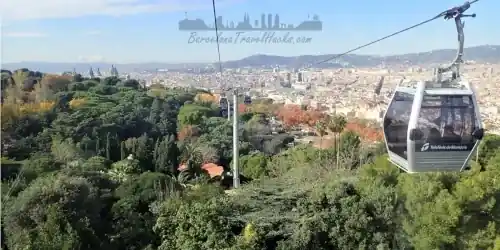
Montjuïc TMB Funicular & Cable Car to Montjuïc Castle
Teleferic de Montjuïc gondola cable car to Montjuïc Castle & Funicular deMontjuïc. Tickets and info for getting to Montjuïc castle
Read more >
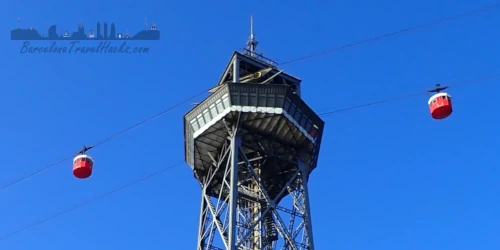
Barcelona Port Cable Car Tickets & info Teleferic del Port
Barcelona Transbordador Aeri del Port cable car 1.3Km over Port Vell Marina from Montjuic to Barceloneta. Tickets & Tips
Read more >
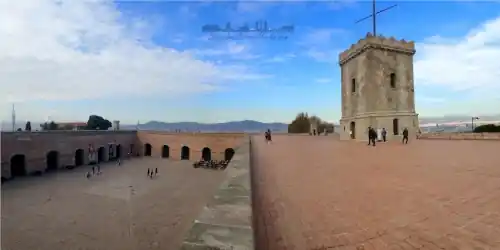
Montjuïc Castle Bastioned Fortress Visitor Info
Military Museum & Fortress. Former prison & execution site from the Civil War. Spanish Army Barracks till 2007. City Viewpoint
Read more >
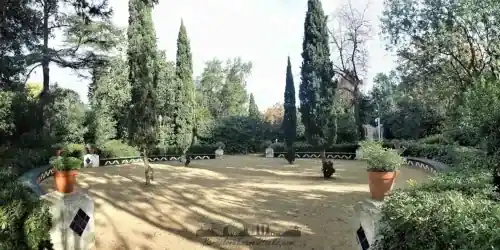
Montjuïc Laribal, Joan Brossa, Mossen Cinto Verdaguer Gardens
Scenic romantic gardens with multiple city viewpoints. Early Gardens built for 1929 International Exposition with more recent gardens for 1992 Olympics
Read more >
